How to Grow Tropical Plumeria Flowers (Frangipani)
Updated: Apr. 09, 2024
Get plumeria care and growing tips, including watering and overwintering. This tropical plant is fragrant and a good choice for containers.
If you’ve ever visited Hawaii, you’ve no doubt seen and fallen in love with plumeria (Plumeria rubra). The waxy blooms of this plant are the quintessential flower for making traditional Hawaiian leis, and the sweet scent is synonymous with the tropics. But plumeria (also called frangipani) is actually fairly easy to grow just about anywhere, as long you follow a few guidelines.
Discover the top 10 tropical plants for your garden.
On This Page
What Do Plumeria Flowers Look Like?
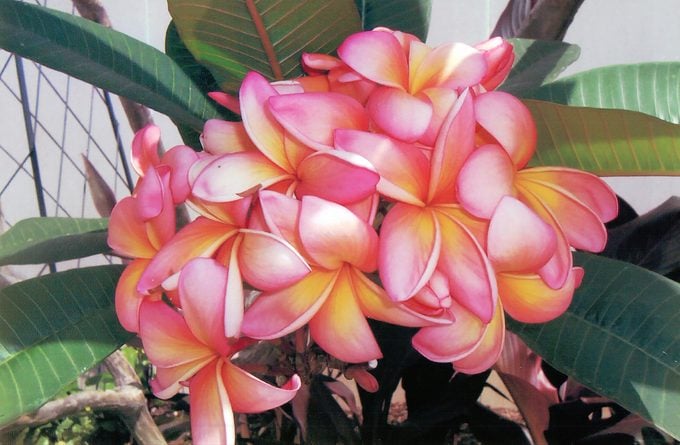
“I took this picture (above) while on vacation in Washington, D.C., outside the National Museum of American History. Do you know what kind of flower it is?” asks Birds & Blooms reader Mark Marino.
Horticulture expert Melinda Myers says, “This beautiful plant is a plumeria that is native to tropical America and has naturalized in Asia and the Pacific Islands. Visitors to Hawaii and other Pacific islands may recognize these flowers that are used to make leis.
Plumeria Care and Growing Tips
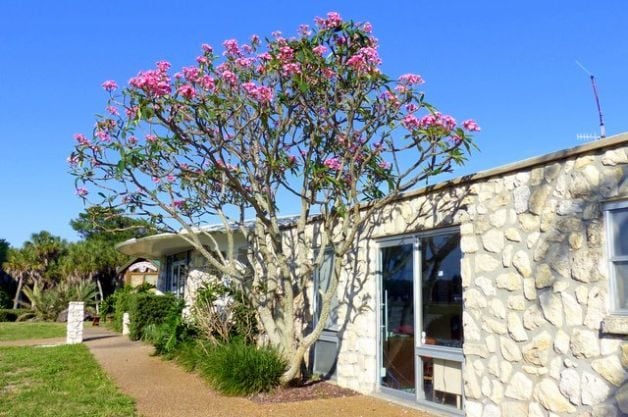
In warmer climates, you can grow plumeria outdoors year-round. If protected from frost and it will become a shrub or even a small tree (as shown above in Tampa, Florida).
“In mild climates, plumeria can grow as tall as 30 feet. In other areas it is grown in containers and moved indoors for winter. This plant needs bright sunlight; warm temperatures; moist, well-draining soil and frequent fertilization when actively growing. The fragrant flowers appear from early summer to fall,” Melinda says.
How to Grow Plumeria From Cuttings
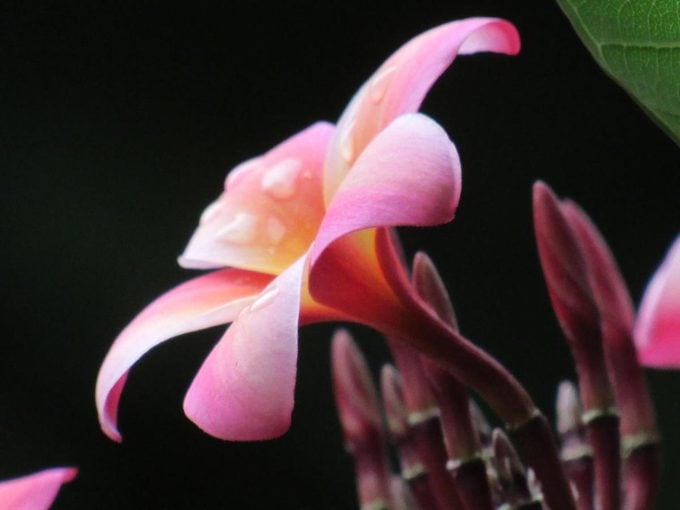
Plumeria is best grown from cuttings from a healthy plant. You can find many places to buy them online. When you order them, you will usually just receive what looks like a thick stick, without much to show for itself.
They are extremely easy to root, though. Just stick them in the soil and give them water and sun. New leaves will begin to grow within a few weeks. Plumeria produces clusters of long-lasting, sweet-smelling flowers from spring through fall, going dormant in the winter.
“My mother purchased this Hawaiian plumeria (above) from a shopping network several years ago. We affectionately referred to it as the ‘stick’ since there were no blooms for the first two years. Since neither of our thumbs are particularly green, we were thrilled and a bit surprised when these beautiful little flowers finally appeared one summer,” says reader Cathy Mcelwee.
Discover the 10 prettiest pink perennial flowers to grow.
How to Overwinter Plumeria
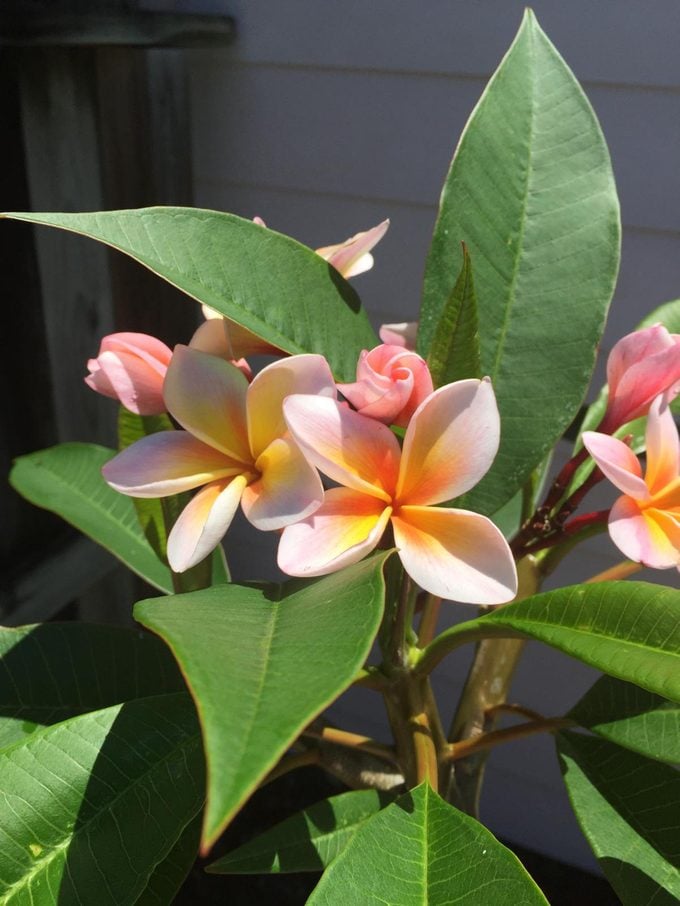
As with most tropical plants, plumeria is not cold-tolerant. In fact, it can be damaged when the temperatures fall into the 40s. (Here’s how to find the first and last frost dates). So if you grow it in any area below zone 10, you will have to take precautions in the winter.
The easiest way to do this is to grow it in a pot, and bring it inside when cool weather arrives. If you’d like to plant it outdoors, you can dig it up in the fall and keep it indoors over the winter. This is when the plant is generally dormant anyway. The Plumeria Society of America has good tips for dealing with the winter in colder climates.
Check out the top 10 flashy flowering succulents to grow.
Watering Plumeria
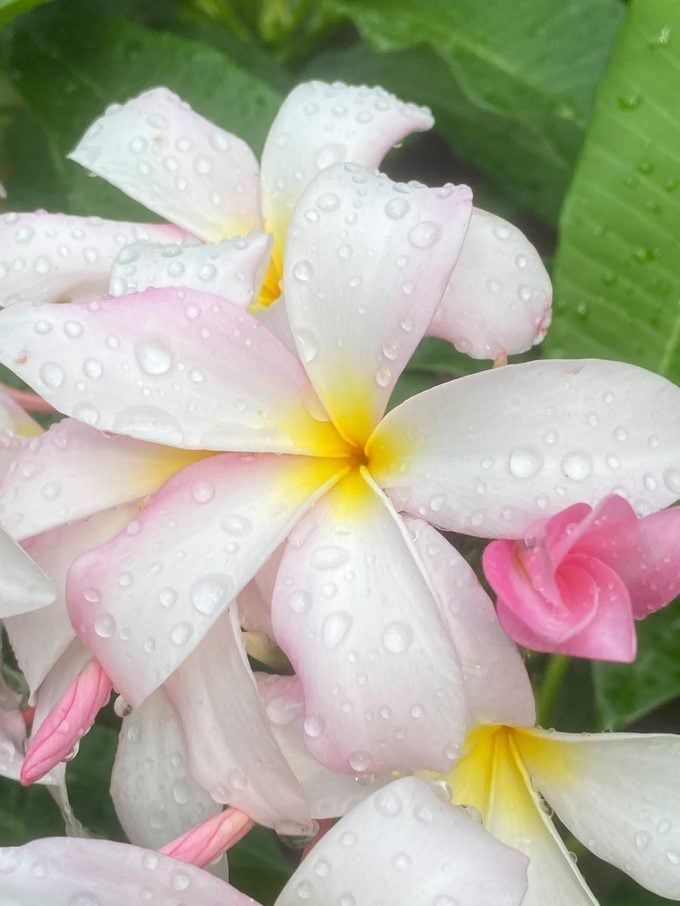
The wonderful thing about this gorgeous flowering plant is that it requires very little water, making it perfect for drought tolerant gardening. Plant it in well-draining soil (sand or sandy soil is ideal). Plumeria likes its soil to dry out between waterings, so expect to give it water once a week or so unless it receives rain.
Does Plumeria Attract Pollinators?
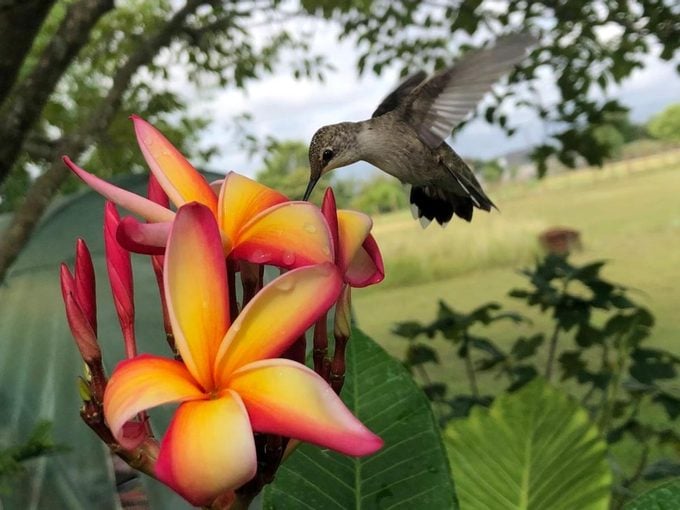
These fragrant flowers may attract bees and other pollinators. In the evening, watch for sphinx moths.
“I was in my backyard watering the plants. The plumeria bloom was beautiful, so I took a photo (above). I forgot about it by the time I went back in the house. It wasn’t until a week or so later that I actually looked at the photo and was shocked to see the visitor I had missed,” says reader Kay Smith.
About the Expert
Melinda Myers is the official gardening expert for Birds & Blooms. She is a TV/radio host, author and columnist who has written more than 20 gardening books. Melinda earned a master’s degree in horticulture from the University of Wisconsin-Madison.
Sources
- The Plumeria Society of America
- Missouri Botanical Garden
Why Trust Us
For nearly 30 years, Birds & Blooms, a Trusted Media Brand, has been inspiring readers to have a lifelong love of birding, gardening and nature. We are the #1 bird and garden magazine in North America and a trusted online resource for over 15 million outdoor enthusiasts annually. Our library of thousands of informative articles and how-tos has been written by trusted journalists and fact-checked by bird and garden experts for accuracy. In addition to our staff of experienced gardeners and bird-watchers, we hire individuals who have years of education and hands-on experience with birding, bird feeding, gardening, butterflies, bugs and more. Learn more about Birds & Blooms, our field editor program, and our submission guidelines.




















